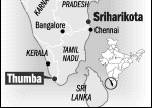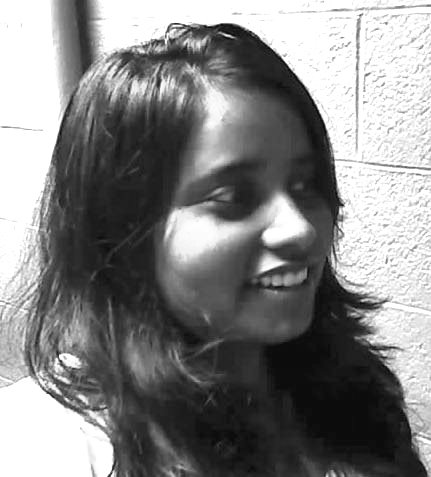India's First Space Programme... How it all began.....
Source: Times Of India
This picture was taken 40 years ago by celebrated French photographer Henri Cartier-Bresson. The caption read
"Preparing for a launch at Thumba Rocket Equatorial Launching Station, housed in a former chruch."

It was a two-stage rocket powered by solid propellants and weighed 715 kilos. The Kerala legislative assembly was adjourned a few minutes before the contraption took flight from the beach so that members could see history in the making. The site was next to St Mary Magdalene's Church at Thumba (in Malayalam, thumba means a white flower plant with medicinal properties). The church was where the payload was put together.
Malayalees who were in the know gathered to watch the primitive thing climb to an altitude of 208 kilometres. It left a sodium vapour trail that lit up the sky and people rejoiced. More perhaps for the celestial tamasha -- it's doubtful that the real significance of the feat had sunk in.
The Thumba launch was the brainchild of Vikram Sarabhai at Mumbai's Tata Institute of Fundamental Research. His was a focused mission -- put India on the space map. Sarabhai started out by writing to some of the finest Indian scientists in the US. He wrote about Thumba, the perfect place from where they could send rockets into space, and asked them to come. Few had the spunk to turn down refuse an invitation from Sarabhai.
They came home from Harvard. From MIT. From Cornell. Then there were young men from NASA, like a certain Abdul Kalam. It was tough to tell then that this young man would one day become India's president.
On November 19, 1963, he received an urgent message from Sarabhai, directing him to rush to Prof Jacques Blamonts' laboratory and collect a sodium vapour payload, board the next flight to India, and make sure the payload reached Thumba. He did just that. Blamonts, a great friend of Sarabhai, also flew down to Thumba to witness the launch.
The rocket itself was a Nike-Apache imported from the US. The payload was French. Mismatch was entirely possible. On November 21, the day fixed for the space launch, tension broke out. To begin with, the payload arrived late. And when it finally did arrive, nobody knew how to transport the damn thing to the launch site.
It's said a bullock cart was used. The rest of the parts, like the rocket cone, were transported on whatever was available -- such as bicycles. And when the parts reached where they had to, the payload wouldn't mate with the American rocket.
This is where the Indian genius for jugad stepped in. Prof P D Bhavsar, a former physics teacher at the University of Minnesota before he joined Sarabhai's team, came up with the idea of scraping the payload at its edges with a small hand tool until the it fitted the rocket. Kalam and Bhavsar rolled up their sleeves and got down to work. “I was a payload fellow then,” Kalam recalled at a function to celebrate the 40th anniversary of India's first sounding rocket.
Marvellously, the labour bore fruit -- the payload fitted the rocket. Even as all of this was happening, some young scientists figured the rocket needed a coat of paint before it was put into orbit. They pulled out the cans and brushes and started doing just that. India's first rocket went up into space with wet paint on it.
But before the rockets went up, there was another problem. Four camera stations were needed to take pictures to record the sodium vapour cloud the rocket would leave behind. Kerala House in Kanyakumari was selected as the first site. The others included college buildings in Palayamcottah, Kottyam and Kodaikanal.
Students were drafted to train the cameras to the clouds. But how would the four stations synchronise their settings? The telephone department stepped in and arranged for facilities enabling a four-way conversation that allowed synchronisation of the cameras.
A day later, NASA called in to congratulate the team. Even as they were talking, tragedy struck. News came in that President Kenney had been assassinated. A year later, the Indian Space Research Organisation (ISRO) was formed, which is currently headed by Madhavan Nair -- then an engineering student at Kolathoor who stood on the terrace to watch India's tryst with history.
All this was 43 years ago. To think that today India's launch capability inspires the world's confidence. Among his many commitments this week in India, President Bush will sign an agreement that will allow India to launch commercial satellites from other countries with US components

For Related Information

3 Comments:
hey, i dint know the first indian rocket launch was from kerala!!!
welcome to blogger
very informative. nice blog
Post a Comment
<< Home